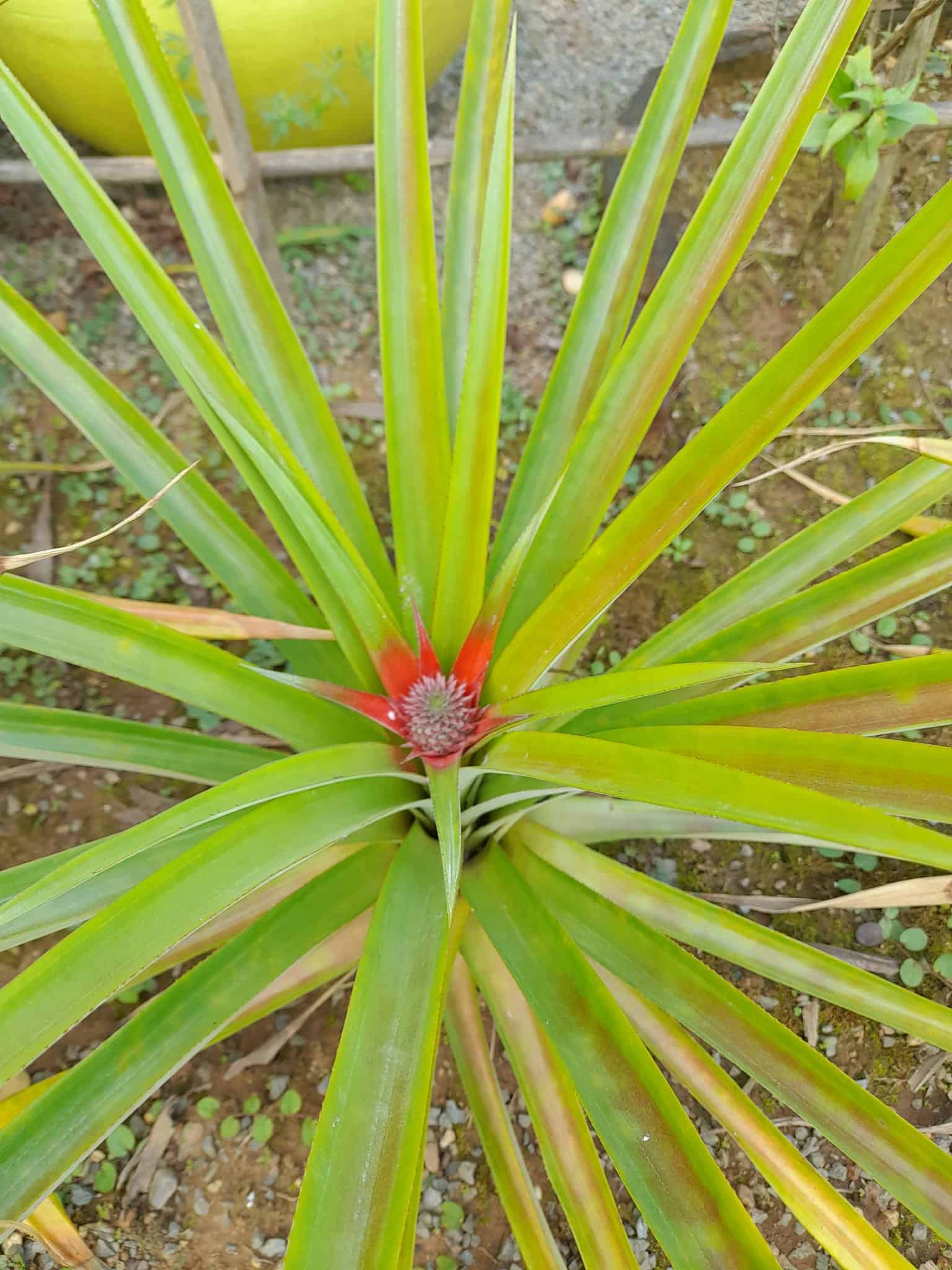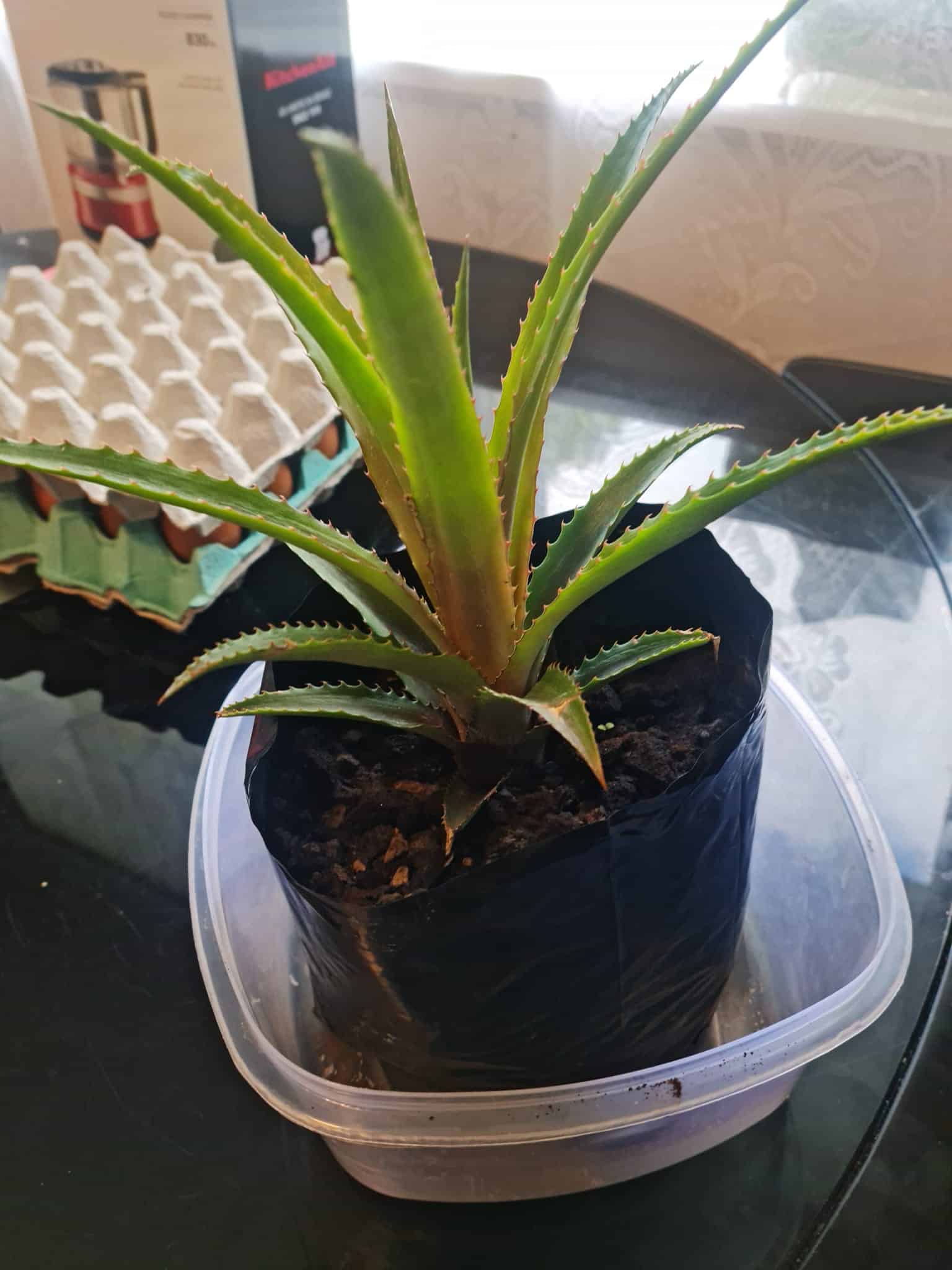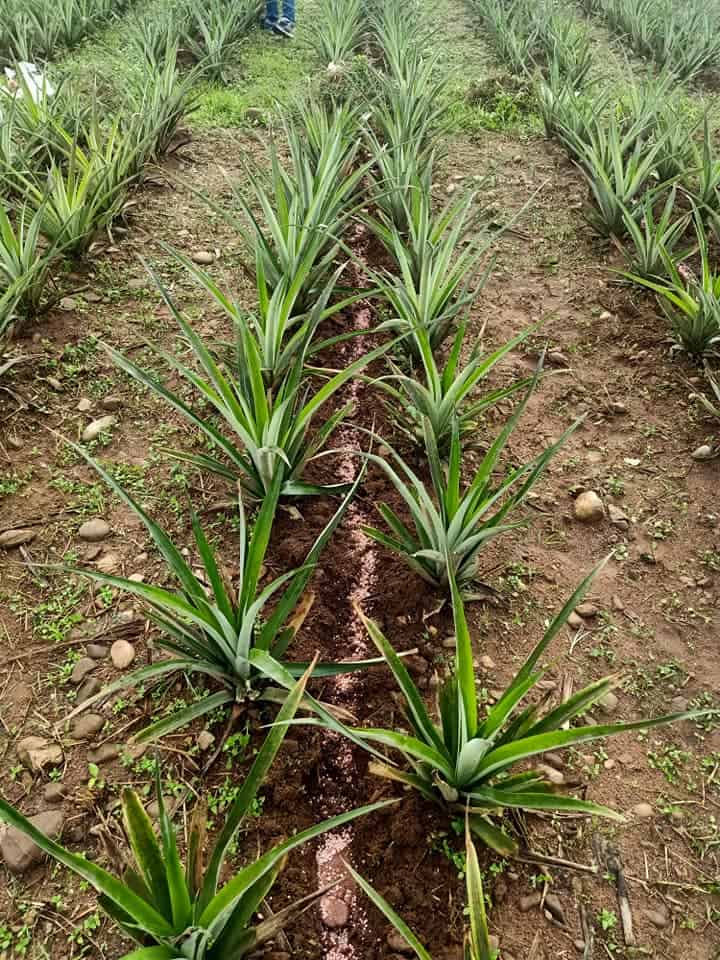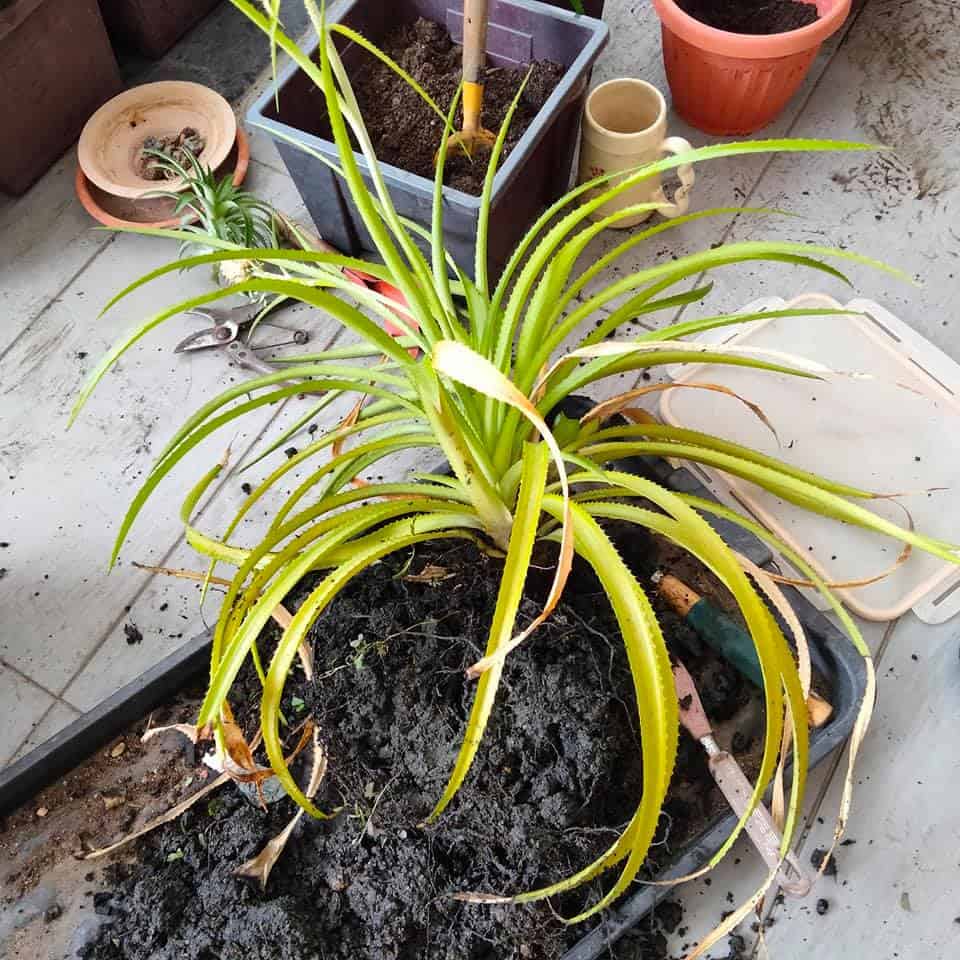All Bromeliad Pineapple care list has one crucial thing in common; patience.
Pineapples are slow growers and can test your wait, as they also demand constant upkeep for successful fruiting.
The problems of a Pineapple are disease and pest outbreaks.
So, if you have a dying Pineapple plant at home, yearning for care, keep reading to save it from despair!
Table of Contents Show
Does Bromeliad Pineapple Need a Lot of Looking After?
Pineapples as houseplants are low-maintenance plants because they manage to grow with minimal care.
So, provide correct tropical conditions of optimum light, temperature, humidity, watering, soil, pruning, repotting, and protection from pests and diseases to ensure a good yield.

Since Bromeliad Pineapples have 3 growth stages, each step may require separate care and requirements.
Bromeliad Pineapple Care: Complete Guide
As mentioned, Bromeliad Pineapple will manage well with minimal upkeep and bear fruits to add to the decoration.
However, irregular care requirements can severely affect their growth.
1. Watering and Humidity
Pineapples belong to the Bromeliaceae family living in a tropical humid environment.
Plants belonging to this family can absorb water from the air and store it in their “water tanks.”
So, they have a low extrinsic watering demand.
Pineapples need routine watering care to prevent overwatering issues and require constant humidity checks.
Overwatering Symptoms
- Yellow leaves (along the margins)
- Progressive browning of leaf tips
- Root rot
Effect of Low Humidity
- Stunted growth
- Delayed flowering
- Slower fruit production
How to Water and Humidify Bromeliad Pineapples Properly?
Follow these steps to offer adequate moisture to your Pineapple plants.
- Mist the leaves of Pineapple plants to cool them down during heat spells.
- Water the plants in the early morning so the soil stays moist for the rest of the day.
- Group Pineapple plants with other houseplants to offer them humidity.

- Use the funnel neck watering method by pouring water along the scoop of the leaf, which accumulates at the central cavity and slowly drips on the soil.
- Avoid water drops to stay on the lower leaves and remove any accumulated water from the pot after watering.
2. Light and Temperature
Bromeliad Pineapples prefer direct sunlight, which can offer them warm temperatures.
Irregularities in light and temperature can affect the leaves of the plant as well as cease flowering and fruiting.
Excessive Light and Temperature Effects
- Gradual yellowing of leaves
- Brown and crispy leaf tips and margins
- Wilting or drooping of leaves
Low Light and Temperature Effects
- Leaf drops
- Delay in flowering and fruiting
- Leggy leaves or stunted growth

How to Provide Light and Temperature for Bromeliad Pineapples?
Here are a few tips to impart proper light and temperature for the plant.
- Place Pineapples near south-facing windows and avoid north-facing drafty windows in winter.
- Use frost blankets to protect from cold injuries.
- When the temperature drops, move them indoors in a warm location.
- Use curtains to protect from the scorching sun and offer dappled light.
3. Soil and Fertilizer
Bromeliad Pineapples need feeble fertilization and percolating soil to prevent the accumulation of fertilizer salts and water.
These plants prefer soil that holds water well but has enough sand or organic perlite to drain excess water and fertilizer salts.
Heavy soil with lots of fertilizer in winter can affect nutrient uptake, damage the roots, and cause waterlogging issues.
Similarly, under-fertilization can also affect the plant during the growth stages.
Symptoms of Overwatering
- Floppy and yellowing of the leaves
- A fishy odor from the soil, indicating root rot
- Mushy stems and lower leaves
Signs of Underfertilization
- Stunted growth and nutrient deficiencies
- Changing leaf colors
- Inapt flowering and fruiting
Effect of Overfertilization
- White mineral salt buildup on the topsoil
- Fertilizer burns (browning of leaf margins and tips)
How to Offer Soil and Fertilizer for Bromeliad Pineapples?
Check these tips to provide a correct soil mix and routine fertilizer care for the plant.
- Flush out the excess fertilizer salts 4-5 times by running the potted plant under distilled water.
- Uproot the plant to check for root rots and remove any black or pulpy roots using sterilized pruners.

- Use a half or one-quarter-strength fertilizer in the soil during watering bouts or carefully spray at the leaves.
- During the flowering stage, apply fertilizer of the same strength every 2 weeks to speed up the fruiting process.
To prepare a DIY potting soil for Pineapples, mix perlite, peat moss, and sand with potting soil in a ratio of 1:1:1.
4. Sporadic Repotting
Pineapple doesn’t require frequent repotting as the mother plant dies after the fruiting and harvesting phase.

But, the plant may need a new pot during the vegetative stage or after propagation as Pineapple plants can grow on average between 3 and 6 feet.
Growing Bromeliad Pineapples in a container is ideal for growing indoors because you can always control the water intake, temperature, and lighting.
However, a 7-gallon plastic container with bottom drainage holes is also suitable for repotting during growth stages.
Watch the following video for a full briefing about repotting Bromeliad Pineapples.
5. Yearly Pruning
Pineapples require annual pruning to remove the sprawling, dead, or decaying foliage and old flowering stems.
Pruning is also necessary to keep pests (scales, mites, ants, and mealybugs) and diseases (root, heart, stem, fruit rot, yellow and white leaf spots, and wilting) at bay.
By removing the leggy and decaying growth, you can make way for proper air circulation within the plant and also prevent the extent of pathogenic spores.
Tips for Keeping Pests and Diseases at Bay
- Isolate the infested Pineapple plant away from the rest of the houseplants.
- Use Q-tips with neem oil to dab away the crawling pests from the leaves, fruits, and stem.
- Apply organic fungicides (avoid copper-based fungicides) every 7-14 days.
- Consider applying fertilizer when the day is warm after the watering schedule.
- Don’t use diseased offsets for propagation, and detach healthy pups from the mother plant.
You can propagate Pineapples using crown tops and suckers more efficiently than the seeds. Suckers or crown tops take up roots fast and offer a head-start on propagation.
However, sometimes Bromeliad Pineapple care also includes some additional cautionary tips.

FAQs About Bromeliad Pineapple Care
Do Bromeliad Pineapples Grow Back?
Bromeliad Pineapples don’t grow after the harvest, producing only 1-2 fruits.
But, they grow new pups or offsets that can be plucked and repotted to grow a new Pineapple plant.
What is the Lifespan of a Bromeliad Pineapple?
A Bromeliad Pineapple plant is a tropical evergreen perennial that can survive for 3-5 years and yield seasonal fruits.
Can you Grow Bromeliad Pineapple from Seeds?
Viable brown to black seeds of Bromeliad Pineapple can germinate to grow into a new Pineapple plant, but it takes about 2-3 years for the new plant to bear its first fruit.
From Editorial Team
Avoid Using Growlights for Bromeliad Pineapples!
Bromeliad Pineapples rarely fruit with low-intensity grow lights.
They need direct sunlight for successful fruiting.
Bromeliad Pineapples incorporate some benefits, such as improving air quality and bearing anti-oxidant, anti-hypertensive, and anti-inflammatory properties.
However you can eat mini pineapple fruit too, but let them ripe to get full nutritional benefits.


